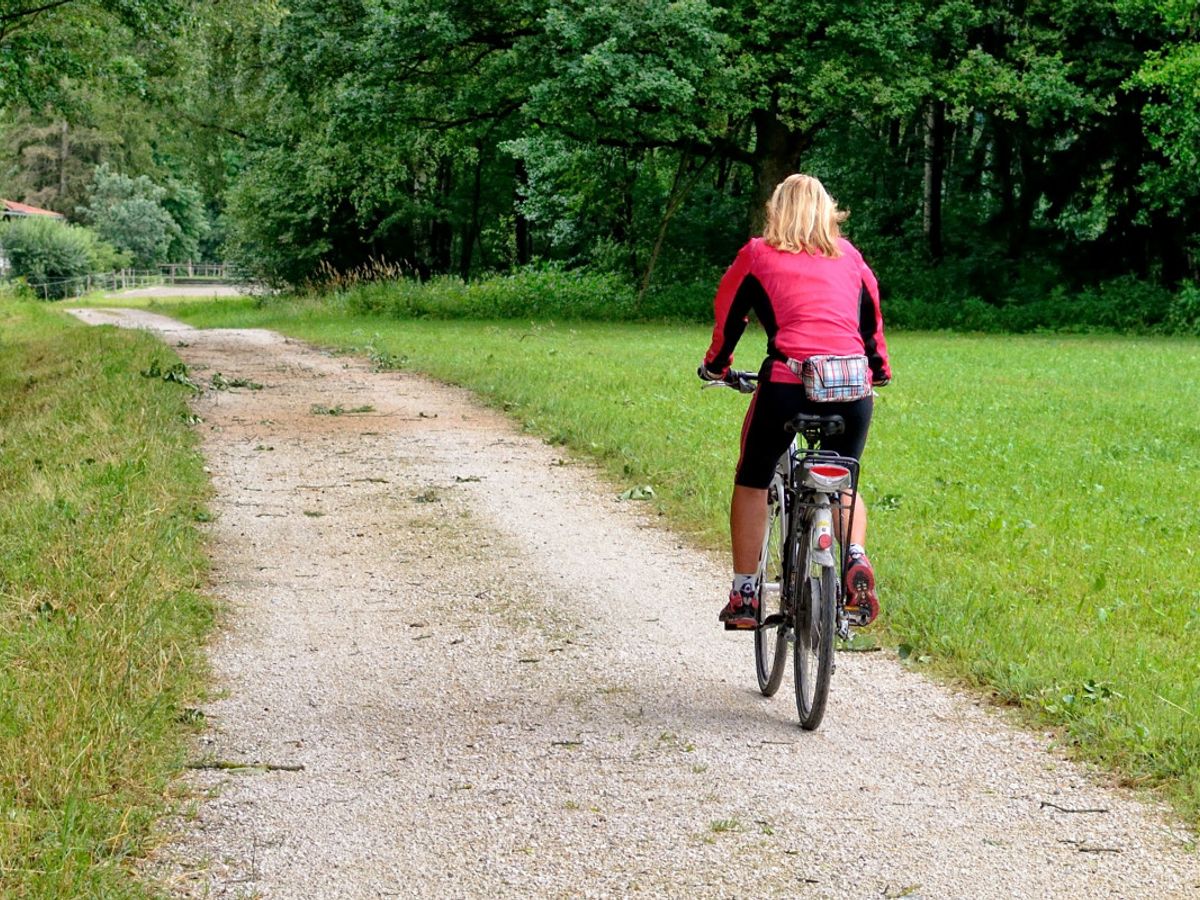Cycling isn’t just a mode of transportation or a leisurely activity; it’s a powerful tool for weight loss and overall health improvement. Whether you’re a beginner or a seasoned rider, hopping on a bike can offer numerous benefits for shedding those extra pounds and enhancing your well-being. This article explores why cycling is an ideal exercise for weight loss, how to get started, and tips for maximizing your results.
Key Takeaways
- Cycling efficiently burns calories, making it an effective exercise for weight loss.
- It’s a low-impact exercise, reducing the risk of injury while still providing a great workout.
- Cycling boosts metabolism, helping you burn more calories even when you’re not riding.
- Choosing the right bike and gear is crucial for comfort and safety, especially for beginners.
- Incorporating interval training and tracking your progress can significantly enhance your weight loss journey.
Why Cycling is Perfect for Weight Loss
Cycling is a powerful and enjoyable exercise for achieving weight loss and overall wellness. It combines calorie-burning efficiency, low-impact benefits, and the ability to engage multiple muscle groups, making it an accessible and versatile choice for anyone. As you begin your cycling journey to lose weight with cycling, consider incorporating HIIT, prioritizing a balanced diet, having enough rest, monitoring your progress, and staying motivated. So, strap on your helmet, inflate those tires, and let’s get started!
Getting Started with Cycling for Weight Loss
Whether you’re a seasoned cyclist or just starting out, this guide will equip you with the knowledge and motivation to achieve your weight loss goals. So fasten your helmet and get ready to pedal your way to a leaner, healthier you.
Creating a Cycling Routine for Weight Loss

Starting a cycling routine for weight loss can be both exciting and a bit overwhelming. The key is to set realistic goals and gradually build up your stamina and endurance. Here’s how you can get started on the right foot.
Setting Realistic Goals
When setting goals, it’s important to be both ambitious and realistic. Start with small, achievable targets and gradually increase them as you progress. For example, aim to cycle for 30 minutes three times a week initially, and then slowly increase the duration and frequency. Remember, consistency is more important than intensity in the beginning.
Incorporating Interval Training
High-Intensity Interval Training (HIIT) can be a game-changer for weight loss. By alternating between high-intensity bursts and low-intensity recovery periods, you can burn more calories in less time. For instance, try cycling at a fast pace for one minute, followed by two minutes of a slower pace. Repeat this cycle for about 20-30 minutes.
Tracking Your Progress
Keeping track of your progress is crucial for staying motivated and making necessary adjustments to your routine. Use a cycling app or a simple journal to log your rides, noting the distance, time, and how you felt during each session. This will help you see your improvements over time and keep you motivated to continue.
Remember, the journey to weight loss is as much about mental transformation as it is about physical changes. Stay patient and persistent, and you’ll see the results.
By following these steps, you’ll be well on your way to creating an effective cycling routine that supports your weight loss goals. Happy cycling!
Nutrition Tips for Cyclists
Balanced Diet Essentials
Losing weight through cycling isn’t just about cutting calories. To avoid being under-fueled while riding, maintain a balanced and nutritious diet that complements your cycling routine. Embrace a diet rich in lean proteins, fruits, vegetables, fiber, and healthy fats to keep your body well-nourished. Weight loss primarily happens with healthy food choices, so focus on the quality of your food.
Pre and Post-Ride Nutrition
Fueling your body with the right nutrients will not only optimize your performance on the bike but also aid in recovery and muscle development. Before a ride, opt for a meal that’s high in carbs and moderate in protein. Post-ride, replenish your energy with a mix of protein and carbs to help with muscle repair and recovery.
Hydration Tips
Hydration is key when it comes to cycling and weight loss. Drink plenty of water before, during, and after your rides to stay hydrated and aid in digestion. Avoid sugary drinks and opt for water or electrolyte-rich beverages to replenish lost minerals.
Remember, the goal is not just to lose weight, but to gain a healthier lifestyle that you can maintain long-term.
Maximizing Weight Loss with Cycling

To optimize weight loss through cycling, it’s important to vary your workouts. This can include long rides at a moderate pace to build endurance and burn fat, as well as incorporating strength training exercises. Strength training helps to preserve and increase muscle mass, which in turn boosts your metabolism. Here are some tips to get started:
- Schedule strength training sessions at least twice a week.
- Focus on compound movements like squats, deadlifts, and bench presses.
- Don’t forget to include core exercises to improve stability and overall performance.
Rest and recovery are crucial components of any fitness routine, especially when aiming for weight loss. Overtraining can lead to injuries and burnout, which can derail your progress. Make sure to:
- Get at least 7-8 hours of sleep per night.
- Incorporate rest days into your weekly routine.
- Use active recovery techniques like stretching and foam rolling.
Remember, your body needs time to repair and grow stronger. Don’t underestimate the power of a good night’s sleep and proper recovery.
Staying motivated can be challenging, but it’s essential for long-term success. Here are some strategies to keep you on track:
- Set realistic goals and celebrate small victories.
- Mix up your cycling routes to keep things interesting.
- Join a cycling group or find a workout buddy for added accountability.
- Track your progress using apps or a fitness journal.
By combining these elements, you’ll be well on your way to maximizing your weight loss with cycling. Keep pushing, stay consistent, and enjoy the ride!
Indoor vs. Outdoor Cycling for Weight Loss

When it comes to cycling for weight loss, you might be wondering whether indoor or outdoor cycling is the better option. Both have their unique benefits, and the choice ultimately depends on your personal preferences and lifestyle.
Benefits of Indoor Cycling
Indoor cycling offers a controlled environment, which means you can ride regardless of the weather. This makes it a reliable option for those who live in areas with extreme weather conditions. Plus, with indoor cycling classes or apps like ROUVY, you can enjoy a structured workout with the added motivation of a virtual community.
Advantages of Outdoor Cycling
Outdoor cycling, on the other hand, provides a dynamic and engaging experience. The changing scenery and fresh air can make your rides more enjoyable and less monotonous. Additionally, outdoor cycling can be more challenging due to varying terrains, which can help you burn more calories and improve your overall fitness.
Choosing What’s Right for You
Ultimately, the best choice is the one that you will stick with consistently. If you enjoy the social aspect and structure of indoor classes, then indoor cycling might be your go-to. However, if you love the freedom and adventure of exploring new routes, outdoor cycling could be more appealing. Remember, the key to effective weight loss is consistency, so choose the option that you find most enjoyable and sustainable.
Common Mistakes to Avoid
When it comes to cycling for weight loss, there are a few common mistakes that can derail your progress. Let’s dive into some of these pitfalls and how to avoid them.
Overtraining
One of the biggest mistakes I see is overtraining. It’s easy to get caught up in the excitement and push yourself too hard, too soon. This can lead to burnout and even injury. Remember, rest days are just as important as your training days. Your body needs time to recover and build strength.
Ignoring Nutrition
Oops, did I forget to eat? Skipping a meal or munching on the wrong snacks before saddling up is like trying to start a car with no gas; you won’t get far. Proper nutrition fuels your rides and aids in recovery. Make sure you’re eating balanced meals and staying hydrated.
Skipping Warm-Ups and Cool-Downs
Skipping warm-ups and cool-downs is another common mistake. These routines prepare your body for the workout ahead and help prevent injuries. A good warm-up increases your heart rate and loosens your muscles, while a cool-down helps your body return to its normal state gradually.
The journey to weight loss is as much about mental transformation as it is about physical changes.
Avoiding these common mistakes can make your cycling journey more enjoyable and effective. Stay mindful and pedal on!
Success Stories: Real People, Real Results
When it comes to inspiring weight loss success stories, nothing beats hearing from real people who have achieved real results. These stories are a testament to the power of personalized plans, community support, and healthy habits. Let’s dive into some of these amazing transformations and the lessons they’ve taught us.
Cycling Challenges and How to Overcome Them
Cycling is an amazing way to stay fit and lose weight, but it does come with its own set of challenges. Here are some common issues you might face and how to tackle them head-on.
Dealing with Weather Changes
Weather can be unpredictable, but that doesn’t mean your cycling routine has to suffer. Investing in proper gear like waterproof jackets and thermal layers can make a huge difference. If it’s too dangerous to ride outside, consider indoor cycling as an alternative. Always check the weather forecast before heading out to avoid any surprises.
Staying Safe on the Road
Safety should always be your top priority. Make sure to wear a helmet and use lights and reflectors to increase your visibility. Pay attention to avoid obstacles: increase your alertness while cycling and observe changes in the road surface to avoid potholes and obstacles. Maintain a safe distance from vehicles and always signal your turns. Joining a cycling group can also provide added safety in numbers.
Overcoming Plateaus
Hitting a plateau can be frustrating, but it’s a normal part of any fitness journey. Mix up your routes and try incorporating interval training to challenge your body in new ways. Tracking your progress with a fitness app can also help you identify areas for improvement. Sometimes, a small change in your routine can make a big difference.
Remember, every challenge is an opportunity to improve and become a better cyclist. Don’t let obstacles deter you from reaching your goals.
The Mental Health Benefits of Cycling
Cycling isn’t just great for your body; it’s a fantastic way to boost your mental well-being too. When I hop on my bike, I feel an immediate sense of freedom and joy. It’s like all my worries just melt away with each pedal stroke. Cycling has a unique way of reducing stress and boosting mood, making it a perfect activity for mental health.
Reducing Stress
One of the first things I noticed when I started cycling regularly was how much it helped me manage stress. The rhythmic motion of pedaling and the fresh air work wonders for clearing my mind. Plus, being outdoors exposes you to sunlight, which naturally boosts your mood.
Boosting Mood
Every time I finish a ride, I feel a rush of endorphins that leaves me in a great mood for the rest of the day. It’s like a natural high that you can’t get from anything else. Whether I’m cycling indoors or outdoors, the effect is the same—I’m happier and more relaxed.
Enhancing Mental Clarity
Cycling also helps me think more clearly. When I’m on my bike, I find that I can solve problems more easily and come up with creative ideas. It’s like the physical activity helps to clear the mental cobwebs, giving me a fresh perspective on things.
The journey to weight loss is as much about mental transformation as it is about physical changes.
Cycling Gear and Gadgets to Enhance Your Ride

When it comes to cycling, having the right gear and gadgets can make a world of difference. Not only do they enhance your performance, but they also ensure your safety and comfort on the road. Let’s dive into some of the must-have accessories and tech gadgets that can take your cycling experience to the next level.
Conclusion
Cycling is more than just a fun way to get around—it’s a powerful tool for weight loss and overall health improvement. By incorporating cycling into your fitness routine, you can enjoy the freedom of the open road while burning calories and building muscle. Remember, the key to successful weight loss is consistency and balance. Pair your cycling efforts with a healthy diet, adequate rest, and a positive mindset. So, strap on your helmet, hop on your bike, and start pedaling your way to a healthier, happier you!
Frequently Asked Questions
Can cycling really help with weight loss?
Yes, cycling is an effective way to burn calories, improve metabolism, and build muscle, all of which contribute to weight loss.
How often should I cycle to lose weight?
For weight loss, it’s recommended to cycle at least 3-4 times a week for 30-60 minutes per session.
Do I need an expensive bike to start cycling for weight loss?
No, you don’t need an expensive bike. A basic, well-maintained bike is sufficient to start your weight loss journey.
What should I eat before and after cycling?
Before cycling, eat a small meal with carbs and protein. After cycling, refuel with a meal rich in protein, healthy fats, and carbs to aid recovery.
Is indoor cycling as effective as outdoor cycling for weight loss?
Both indoor and outdoor cycling can be effective for weight loss. The choice depends on personal preference and convenience.
Can I combine cycling with other forms of exercise?
Yes, combining cycling with strength training and flexibility exercises can enhance overall fitness and weight loss results.
How can I stay motivated to cycle regularly?
Setting realistic goals, tracking progress, joining a cycling group, and varying your routes can help maintain motivation.
What safety tips should I follow as a beginner cyclist?
Always wear a helmet, use proper signals, stay visible, follow traffic rules, and ensure your bike is well-maintained for safety.
- Sustainable Weight Loss Strategies: Achieving Long-Term Success – June 16, 2024
- Cycling for Weight Loss: Pedal Your Way to a Healthier You – June 15, 2024
- Weight Loss Coaching: Personalized Guidance for Effective Results – June 15, 2024



